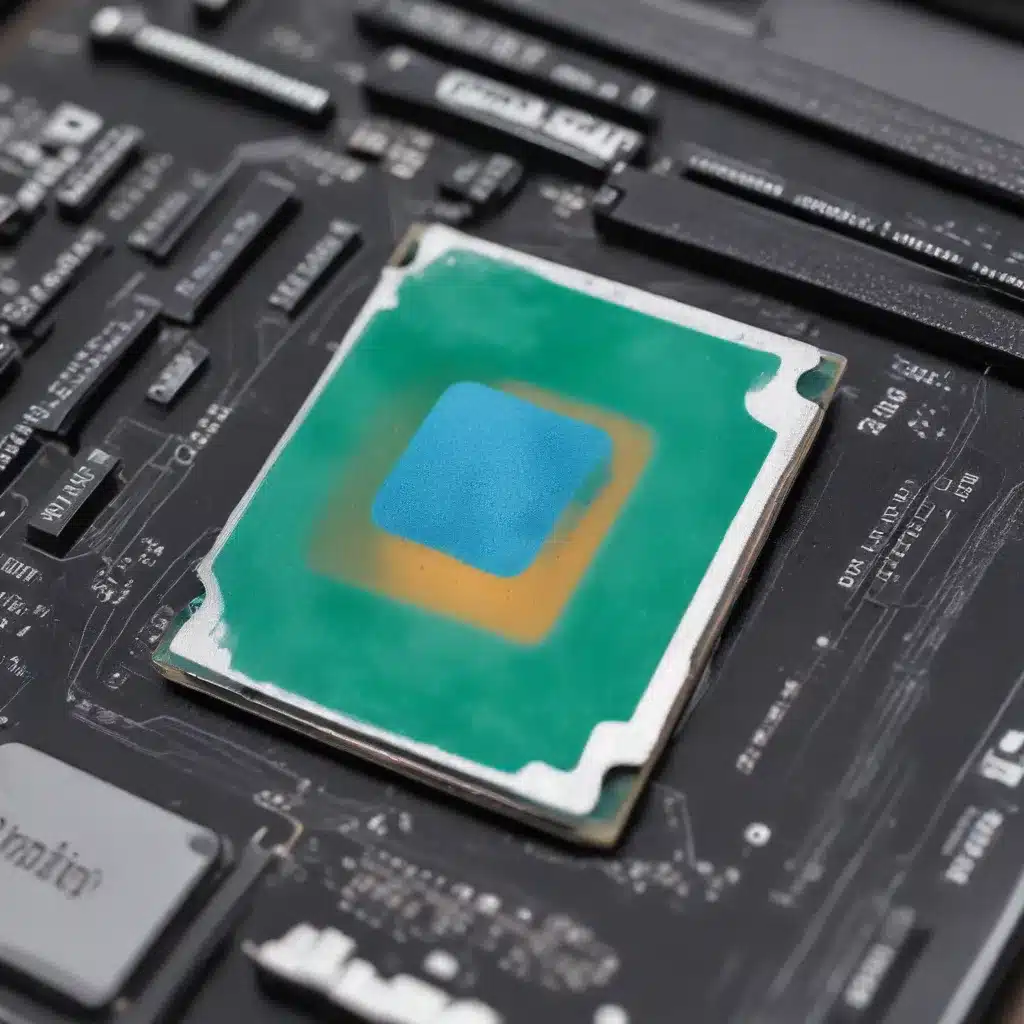
The Importance of Proper Thermal Management
As an experienced IT professional, I’ve seen firsthand the impact that effective thermal management can have on a laptop’s performance and longevity. Laptops are compact, powerful machines that often push the limits of their hardware, generating significant heat in the process. Proper cooling is essential to keep these components running at optimal levels, preventing throttling, crashes, and even permanent damage.
One of the most critical aspects of laptop thermal management is the application of thermal paste, also known as thermal compound or thermal interface material (TIM). This vital component acts as a heat conductor, transferring thermal energy from the CPU and GPU to the laptop’s heat sink and cooling system. Over time, however, thermal paste can degrade, leading to decreased heat transfer and increased operating temperatures.
When to Reapply Thermal Paste
The frequency at which you should reapply thermal paste on your laptop can vary depending on several factors, including the type of paste used, the laptop’s usage patterns, and the overall environmental conditions. As a general guideline, it’s recommended to reapply thermal paste every 12-24 months or whenever you notice a significant increase in your laptop’s operating temperatures.
Some key signs that it’s time to reapply the thermal paste include:
- Increased CPU/GPU temperatures: If you notice your laptop’s components are running significantly hotter than they used to, it may be a sign that the thermal paste has degraded and needs to be replaced.
- Frequent thermal throttling: Thermal throttling is a mechanism that reduces the CPU or GPU’s clock speed to prevent overheating. If you’re experiencing frequent thermal throttling, it’s a clear indication that the cooling system is not functioning effectively.
- Sudden performance drops: As thermal paste degrades, the laptop’s components may not be able to dissipate heat as efficiently, leading to performance degradation and potential system crashes.
Preparing for Thermal Paste Reapplication
Before you begin the thermal paste reapplication process, it’s essential to gather the necessary tools and prepare your laptop properly. Here’s what you’ll need:
- Thermal paste: Choose a high-quality thermal paste, such as Arctic Silver, Thermal Grizzly, or Noctua. Avoid using generic or low-quality pastes, as they may not provide the same level of thermal conductivity.
- Isopropyl alcohol (91% or higher): This will be used to clean the CPU and GPU surfaces before applying the new thermal paste.
- Clean, lint-free cloths: These will be used to wipe away the old thermal paste and clean the component surfaces.
- Screwdrivers: You’ll need the appropriate screwdrivers to disassemble your laptop and access the CPU and GPU.
Before starting the process, ensure that your laptop is powered off and unplugged from the power source. It’s also a good idea to work in a clean, well-lit area to minimize the risk of dust or debris contaminating the sensitive components.
Thermal Paste Reapplication Step-by-Step
-
Disassemble the laptop: Carefully follow the manufacturer’s instructions or online guides to disassemble your laptop and gain access to the CPU and GPU. This may involve removing the bottom panel, keyboard, or other components.
-
Clean the old thermal paste: Use a clean, lint-free cloth and isopropyl alcohol to gently wipe away the old thermal paste from the CPU and GPU surfaces. Ensure that the surfaces are completely clean and dry before proceeding.
-
Apply the new thermal paste: Once the surfaces are clean, apply a small, pea-sized amount of the new thermal paste to the center of the CPU and GPU. Avoid using too much paste, as this can lead to uneven coverage and decreased thermal conductivity.
-
Reassemble the laptop: Carefully replace the heatsink and fans, ensuring that they are properly aligned and secured. Reassemble the laptop, following the disassembly steps in reverse.
-
Test the results: Power on the laptop and monitor the CPU and GPU temperatures under load. You should notice a significant decrease in temperatures compared to before the thermal paste reapplication.
Optimizing Laptop Cooling Performance
In addition to regularly reapplying thermal paste, there are several other steps you can take to improve your laptop’s cooling performance and extend its lifespan:
- Use a cooling pad: Investing in a high-quality laptop cooling pad can provide an additional layer of cooling, helping to dissipate heat and keep your components running at lower temperatures.
- Clean the fans and heatsinks: Over time, dust and debris can accumulate in the laptop’s cooling system, reducing its efficiency. Regularly clean the fans and heatsinks using compressed air or a soft-bristle brush.
- Ensure proper airflow: Make sure that the laptop’s air vents are not obstructed, and that the laptop is placed on a flat, hard surface to allow for optimal airflow.
- Monitor temperatures: Use a system monitoring tool, such as IT Fix’s Laptop Thermal Monitor, to keep track of your laptop’s CPU and GPU temperatures. This will help you identify any potential issues and take corrective action.
By following these best practices and regularly maintaining your laptop’s thermal management system, you can help ensure that your device continues to perform at its best for years to come.
Conclusion
Proper thermal management is a critical aspect of laptop ownership and maintenance. By understanding the importance of thermal paste reapplication and taking the necessary steps to optimize your laptop’s cooling performance, you can extend the lifespan of your device, improve its reliability, and enjoy a smoother, more responsive computing experience.
Remember, as an experienced IT professional, I’m always here to provide practical tips and in-depth insights on technology, computer repair, and IT solutions. If you have any further questions or need additional assistance, don’t hesitate to reach out to the IT Fix team.












